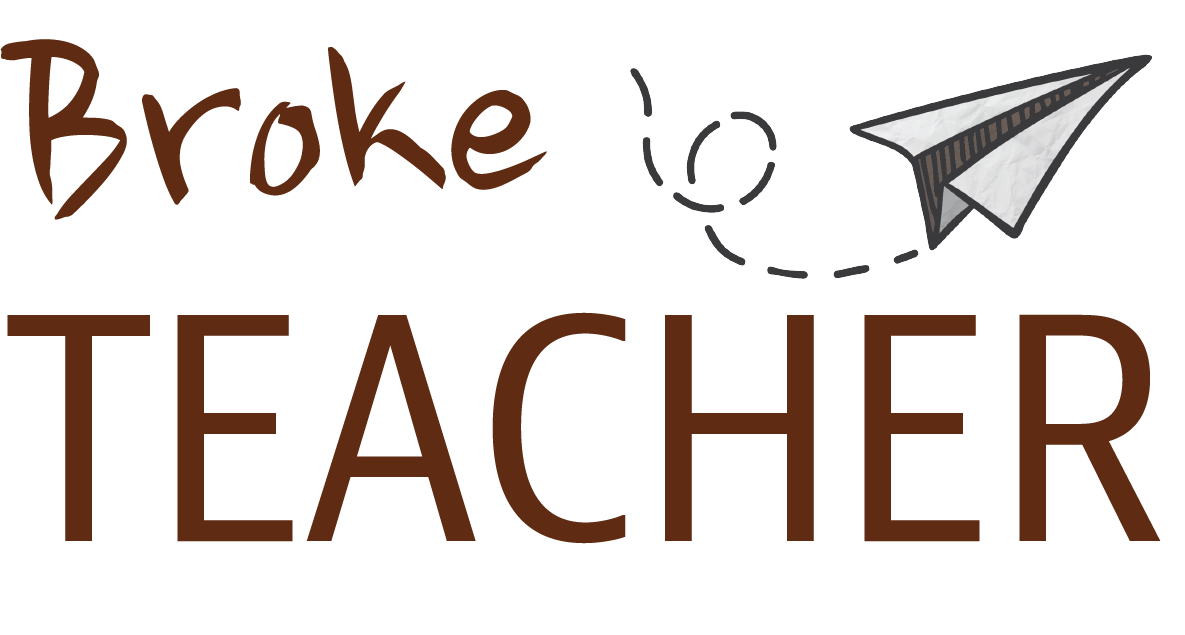You just spent a ton of time creating a unit. It’s beautiful. You’ll use it this year, and maybe next. Or maybe you wrote a curriculum or guide for your department.
Who owns that content?
This is an important question. If you put in the work, it should be you. You should have the freedom to use, share, or sell the material you make for your classroom. And if you let someone else use it, they should give you credit.
As a teacher, you probably don’t think about intellectual property rights, but you should.
Five reasons to think about intellectual property rights
Reason One: You made the content.
If you make content, you should be able to use it in many ways–some of which can make you money.
Reason Two: People will wreck your stuff.
I’ve shared content in the past and noticed people copied or changed certain aspects on my master copy, or made a copy themselves and changed things so it was no longer correct according to my research. If something has my name on it, I want it to say what I intended.
Reason Three: Plagiarism is wrong
I work with a person who makes beautiful organizers. I’ve seen those organizers pop up in many other places–“borrowed” by staff and administration alike–without attribution. If someone puts work into an original piece, they deserve to get credit every time. It’s not just a “thanks for sharing” issue, it’s an issue of respect.
Sharing materials allows us to help others, but if you’re trying to take a shortcut on the doing the work yourself, or just in awe of someone who makes great stuff, they deserve gratitude and attribution at a minimum
Reason Four: You might leave the job
If you’ve thrown out textbooks and spent years crafting PDFs, organizers, blogs, websites, and educational resources, you want to be able to take them with you if you leave. You can’t do that if they’re trapped on a school site or worse yet, if they’re determined to be school property, not yours.
Reason Five: You can make money
A lot of your material can make you money. You can tweak it a bit and turn it into a short course, guide, instructional materials, organizers, or other teacher resources and put them on Teachers Pay Teachers, Teachable, Udemy, or even make a short book and list it on Amazon.
But not if you don’t own it.
This can be a nice passive income stream if you maintain access and ownership of your work.
Guaranteed Ways to Lose Your Work Product
It’s important to keep control of your master copies organized and offline, and to create your work in a way that preserves your rights to use it. If you create the next great teacher book, unit, or revolutionary idea, you don’t want someone saying to you, “You made that during a professional development day. It belongs to us.”
This stuff happens in tech and science research all the time. It is starting to happen in schools.
Here’s how to make sure your intellectual property is really yours:
Way #1: Make it at home
If you truly want to own the materials you make for your classroom, this is the most important thing: Make it at home, on your time, on your computer. Any time you do something on work time with work resources, there’s a good legal chance it partially or fully belongs to your job. If you got paid for the time you used to create materials, it’s work product that belongs to your school or job. So, if you build the next million-dollar resource using material you produced during your planning period, you will lose.
Way #2: Don’t create it on the work drive
Let’s say you’re doing all your writing, creating, and planning on your time–weekends, nights, vacations. You’re using your computer.
But you click into your school Google Docs and create it there. You could use your material to an administrative sweep, a hack, or an accidental share. And there’s still the argument that you were using the school network.
It’s always safer to keep a folder in your personal accounts, then make a copy for school.
Many school sharing permissions default to faculty-level with edit permissions. I’ve had colleagues return to totally changed documents they had to recreate–or worse–their files and folders deleted.
Way #3: Don’t use a content platform
The only way to truly control your work is to create it on your computer and store a copy in a secure file, which you control. Any time you’re in the cloud on someone else’s platform, you risk losing all the content in it
I’ve had this happen twice–the first time, I put units on an edtech site that closed down. I had so much content on the site, this took days, and in the end, material was lost.
I also had a tech job where they decided to switch collaboration software without notice–all my notes and files were attached to the one we were using. I lost access.
If you’re creating content on someone else’s platform–Pinterest, Facebook, any blog that you write in directly, a school blog or website, or any other learning platform–you can lose your content.
Make sure you have a folder with your creations safely stored. Then, back that up offline.
That way, if there’s a hack or school changes platforms, you don’t lose your stuff.
What to do next…
As long as you own and maintain your own content, the possibilities are endless. You can dump a copy in the department folder and share, you can put copies online for students, families, and other teachers, or you can make a Teachers Pay Teachers store.
But you’ll have control and you’ll make the call.
That’s the important thing.
